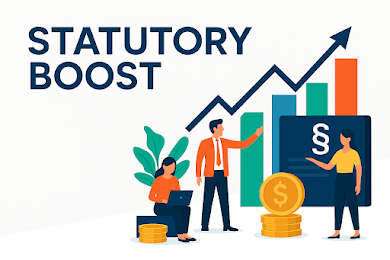From
1st Oct, 2020 a new section under the Income Tax Act, 1961 will
become effective i.e. Section 194O.
This
section was introduced by the Finance Minister in the Union Budget 2020 to bring
more transparency on the income earned by seller of goods / services through
digital platforms. Now-a-days, customers prefer digital platforms for buying or
selling of goods and services. This has resulted in increase in number of
e-commerce users over a period of time. It is difficult to identify small
sellers who don’t file their income tax returns. Thus, the government has
enlarged the tax base to bring such e-Commerce participants under the tax ambit.
ü Applicability
|
Payer (Person who will deduct TDS) |
Payee (Person whom TDS will be deducted) |
|
E-commerce Operator [a person who owns, operates, or manages a
digital/electronic facility for the sale of goods and services.] |
E- Commerce Participant [a
person resident in India selling goods or providing services or both,
including digital products, through digital or electronic facility or
platform for electronic commerce;] |
Applicable for transactions from 1st
October, 2020 onwards.
ü Exceptions: TDS is not required to be deducted if:
(a)
Amount paid
or credited to individual/HUF is less than Rs. 5,00,000/- and such person has
furnished PAN card or Aadhar card to the e-commerce operator.
(b)
E-commerce
participant is a Non-resident.
ü Rate of TDS: @ 1% of the gross amount of such sale of goods or
services
At the time of credit or payment, whichever
is earlier.
ü Points to
be noted:
·
Rate of
TDS shall be @ 5%, as per Sec. 206AA, if PAN/aadhar is not available.
·
It is
not applicable in case where a person sells goods through its own website/
digital platform; since, in that case, payer and payee will be same.
·
In case
where a buyer buys product online through e-commerce operator (Like Amazon, Flipkart,
etc.) but payment is made directly to e-commerce participant, then TDS is
required to be deducted on the gross amount paid. Let us understand it with the
help of an example.
Illustration:
Mr. Ram, a buyer,
buys a TV through Amazon from Mr. Shyam, a seller, for Rs. 20,000/- and paid
online. For installation of TV, Mr. Ram paid Rs. 1000/- directly to Mr. Shyam,
then is this case, Amazon is required to deduct TDS @ 1% on gross amount of Rs.
21,000/-. Being Rs. 1000 directly paid to seller by buyer is alos deemed to be
paid by e-commerce operator.
Apart from all the provisions,
Amazon and other digital platforms are seeking clarity from the Government on
Sec. 194O. Earlier, in February 2020, the companies had sought more time to
upgrade their IT systems in order to enable them to collect the TDS from sellers.
According to ET report, the companies need clear rules from the government for
this tax, which they are to deduct before payment to vendors, and how certain
transaction should be treated.
Feel free to contact in case of any query or consultation.



0 Comments